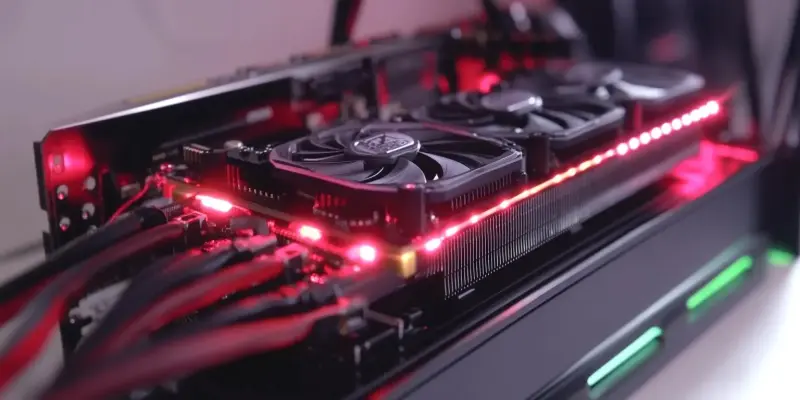Intel has made an intriguing decision to retire its RS1 stock cooler, which was previously included with entry-level Pentium G7400 and Celeron G6900 processors, in favor of the RM1 cooler. The shift to the RM1 cooler may appear to be a simple change in hardware, yet it reflects deeper underlying considerations and industry trends. While both coolers are designed for 65W TDP, the RM1 offers several advantages over the RS1, including a copper heatsink base that enhances heat dissipation capabilities and a rotating LED light strip for improved aesthetics. This move marks a significant milestone in Intel’s approach to thermal management, especially for its entry-level CPUs.
The Transition from RS1 to RM1
The RS1 cooler, which has served as the standard cooling solution for Intel’s entry-level processors like Pentium G7400 and Celeron G6900, is being phased out without any direct replacement. Instead, Intel will now use the existing RM1 cooler as the in-box option for these CPUs. The RM1 cooler, which is also a default cooling solution for several other Intel processors ranging from the 12th-gen Core i3 to the 14th-gen Core i7 models, boasts a superior design. The RM1 cooler features a copper heatsink base as opposed to the aluminum base of the RS1, allowing for improved heat dissipation. It also includes a rotating LED light strip that adds visual appeal. In contrast, while the RS1 sufficiently managed the temperature of entry-level processors, it didn’t offer the same level of performance or aesthetic qualities as the RM1 cooler.
Another cooler in the Laminar series, the R#, is particularly noteworthy, as it is employed in high-end locked CPUs such as the Core i9 series. The R# is regarded as the most premium cooler in Intel’s stock cooler lineup, equipped with a copper heat column and a stainless steel heatsink fastener. This consolidation to utilize the RM1 cooler across a broader range of products demonstrates Intel’s strategic effort to streamline its product offerings and production processes.
Financial and Performance-Related Considerations
While Intel has not publicly disclosed the specific reasons behind discontinuing the RS1 cooler, several factors likely influenced this decision. Financial considerations are speculated to be a driving force. Maintaining a separate cooling solution for low-margin, entry-level processors like the Pentium G7400 and Celeron G6900 may not be a cost-effective approach for Intel. The RM1 cooler, with its superior design and materials, likely provides better heat dissipation. However, in practical terms, the upgrade may result in only minor improvements in the real-world performance of these entry-level CPUs.
The RS1 cooler was already adequate for regulating the temperature of these processors, ensuring they operated within safe thermal limits. Nevertheless, adopting the RM1 cooler offers Intel a way to standardize cooling solutions across their range of products, simplifying inventory management and reducing costs. By using a common cooler like the RM1 for multiple processor models, Intel can achieve economies of scale, making production more efficient and potentially reducing the overall cost.
Strategic Implications
Intel has made an interesting decision to phase out its RS1 stock cooler, which was previously paired with entry-level Pentium G7400 and Celeron G6900 processors, in favor of introducing the RM1 cooler. While this might seem like a straightforward hardware update, the move to the RM1 cooler actually represents deeper strategic considerations and reflects broader industry trends. The RM1 cooler, like the RS1, is designed to handle 65W TDP, but it brings several improvements. Notably, the RM1 features a copper heatsink base that significantly boosts heat dissipation efficiency, ensuring better thermal performance. Additionally, the RM1 comes with a rotating LED light strip that offers enhanced visual appeal. This transition is a significant milestone in Intel’s approach to thermal management and signals an evolving strategy, particularly for its entry-level CPUs. By enhancing both function and aesthetics, Intel aims to provide better cooling solutions that meet the growing demands of consumers and align with contemporary design preferences.

